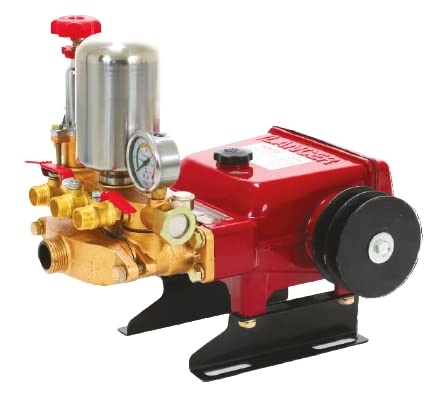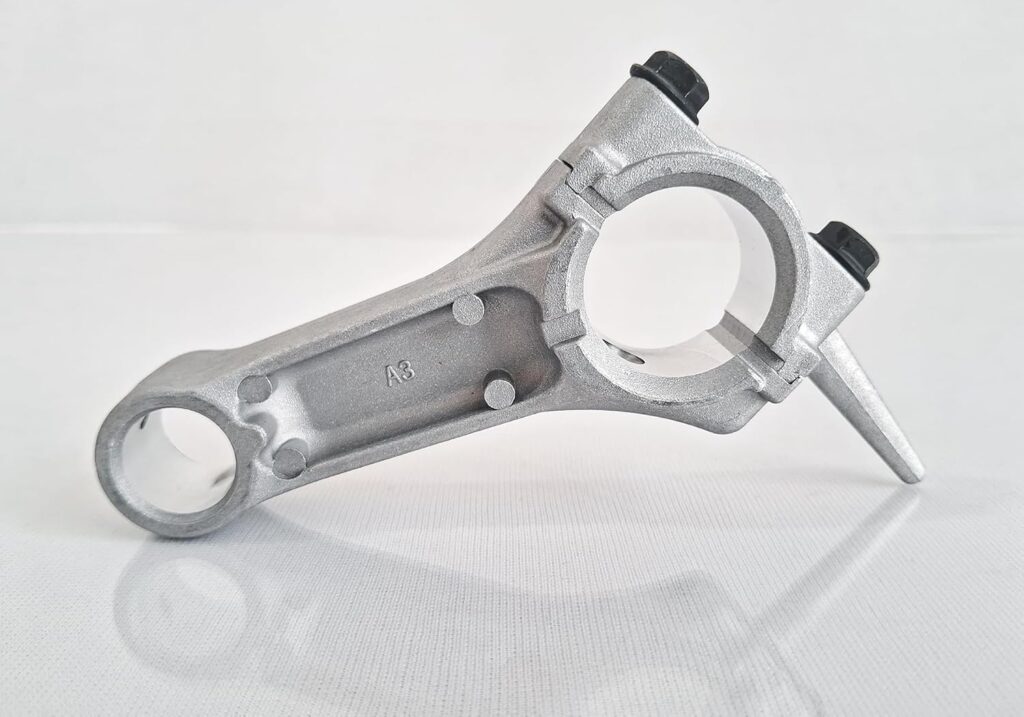LANCER Spray Pump for Agriculture And Gardening Sprayer in 3 Piston

Its Very Popular In India For Spray In Field Crops, Tea Garden, Agriculture And Industrial Pest Control Activities And Municipal Works Crown Sprayer For Indoor And Outdoor Use Even Its Also Use As Sanitizer Sprayer For Sanitize Home, Office, Restaurant, School, Hospitals Factories, Hypermarket, Hotel.
For Agriculture , Gardening Sprayer And Cleaning Equipments
Pump Irrigation 1000-1200 RPM , Suction 55-65 Ltr Per Minute
Pump Power 3-5 HP , Piston X Diameter X Stroke 3X30X20
Use For Cleaning Environment , School , Hospital . Hotel
cleaning Family Garden , Garden , Glass Cleaning , Etc
Sharp Garuda Piston Connecting Rod|170F 4Stroke Engine Accessories|Agriculture Power Weeder GH100,GH100P,Mini Weeder,HTP Sprayer,Water Pump-2″,3″ Spare Parts

The connecting rod is a vital part of an engine, linking the piston to the crankshaft. As the piston moves up and down, the connecting rod transfers this motion to the crankshaft, converting it into rotational motion to power the vehicle or machinery. Made of strong alloy steel, it’s built to withstand high stresses. Regular checks for wear and proper torque ensure engine reliability. The connecting rod serves as a crucial link between the piston and the crankshaft in an internal combustion engine. It transfers the reciprocating motion of the piston into rotational motion, allowing the engine to convert energy from combustion into mechanical work.
Design and Construction: Connecting rods are typically made of high-strength alloy steel to withstand the high stresses and loads encountered during engine operation. They have a distinctive shape resembling an elongated rod with a cap at one end and a bearing surface at the other end.
Cap and Bearing Surface: The cap is a detachable part of the connecting rod that houses the bearing shell. It is secured to the connecting rod body through bolts or studs. The bearing surface, or big end, interfaces with the crankshaft journal and contains a bearing insert to reduce friction.
Small End: The small end of the connecting rod connects to the piston via the piston pin, also known as the wrist pin or gudgeon pin. It often features a bronze bushing or needle bearing to provide a low-friction pivot point for the piston pin.
Beam Section: The main body of the connecting rod is often referred to as the beam section. It is designed to withstand high tensile and compressive loads as the piston moves within the cylinder bore.
Maintenance:Regular upkeep is vital for engine reliability. Check for wear signs like damaged bearing surfaces or elongated rods. Ensure proper torque on bolts/studs to prevent loosening or failure during heavy use.